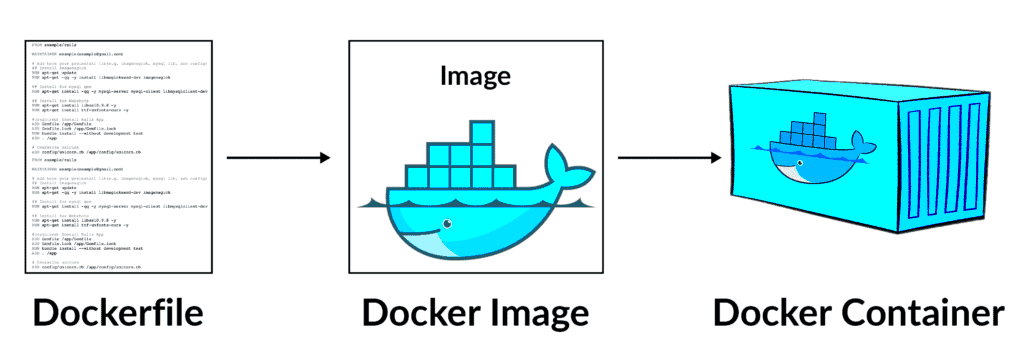Renaming a Docker image is a simple yet crucial task when working with containers. Docker images are often used as blueprints to create containers, and sometimes, you might find that the image name no longer reflects its purpose or content. Renaming helps in organizing your Docker images more effectively and ensures consistency across your development and production environments.
Why Renaming a Docker Image Might Be Necessary

There are several reasons why you might need to rename a Docker image:
- Improved Organization: Over time, as your project evolves, the original image name may no longer match its function. Renaming helps keep everything organized.
- Versioning: When building multiple versions of the same image, a clear naming convention can help distinguish between them.
- Consistency Across Environments: For consistency, you might want the same image name across local, staging, and production environments.
- Collaboration: In collaborative environments, a descriptive and accurate image name helps others understand the image’s role without confusion.
- Fixing Mistakes: Sometimes, a simple typo in the image name can cause confusion or errors in your workflow. Renaming helps fix these issues.
Whatever the reason, renaming a Docker image can simplify your container management and improve your team's workflow.
Prerequisites for Renaming a Docker Image
Before you proceed with renaming a Docker image, there are a few things you need to ensure:
- Docker Installation: You must have Docker installed on your system. If Docker is not yet installed, visit the official Docker website for installation instructions.
- Docker Image Available: Ensure the image you want to rename exists locally. You can check available images by running the command
docker images. - Command Line Access: Make sure you have access to the terminal or command line interface (CLI) on your system to execute Docker commands.
- Permissions: You need the necessary permissions to perform Docker image operations. If you're not the system administrator, you may need elevated privileges to execute the rename command.
Once you confirm these prerequisites, you're ready to rename your Docker image safely.
Step-by-Step Guide to Renaming a Docker Image
Renaming a Docker image is quite straightforward, but it requires a few steps to ensure everything is done correctly. Follow the steps below to rename your Docker image:
- Step 1: Open your terminal or command line interface (CLI). This is where you'll input the commands to rename your Docker image.
- Step 2: List all available Docker images by running the command
docker images. This will display a list of images along with their names, tags, and IDs. - Step 3: Choose the image you want to rename. You can identify the image by its REPOSITORY and TAG columns.
- Step 4: Use the
docker tagcommand to assign a new name to the image. The syntax is: - Step 5: After renaming the image, you can remove the old image name if you no longer need it. Use the
docker rmicommand: - Step 6: Verify the image renaming by listing your images again with
docker imagesto ensure the new name appears in the list.
docker tag [current_image_name] [new_image_name]For example, if you have an image named "myapp:latest" and you want to rename it to "myapp:v2", you would run:
docker tag myapp:latest myapp:v2docker rmi [old_image_name]For example, to remove the old "myapp:latest" image, you would run:
docker rmi myapp:latestThat's it! You've successfully renamed your Docker image.
Verifying the New Docker Image Name
After renaming your Docker image, it’s essential to verify that the new name has been applied correctly. Follow these steps to confirm the changes:
- Step 1: Run the
docker imagescommand. This will display a list of all images along with their names, tags, and IDs. - Step 2: Look for your renamed image in the list. You should see the new image name in the REPOSITORY column along with the correct TAG (if applicable).
- Step 3: If you want more detailed information, you can use the
docker inspectcommand followed by the image name. For example:
docker inspect myapp:v2This will provide detailed metadata about the image, including the new name and other related information.
docker run. For example:docker run -d myapp:v2If the container starts successfully, it means the image renaming was successful, and everything is working as expected.
Verifying the new Docker image name ensures that you’re working with the correct version and avoids potential issues down the line.
Common Errors When Renaming a Docker Image and How to Fix Them
While renaming a Docker image is relatively simple, you may encounter some common errors along the way. Here are a few problems you might face and how to fix them:
- Error 1: Image Not Found
If you see an error like “Error: No such image: [image_name]”, it means Docker can't find the image you're trying to rename. Double-check the image name and ensure you're using the correct repository and tag. You can rundocker imagesto see all available images. - Error 2: Permission Denied
If you're getting a “Permission Denied” error, it likely means you don’t have the required privileges to rename or remove the image. You might need to run the command as a superuser usingsudo(on Linux or macOS) or ensure you're logged in as an administrator (on Windows). - Error 3: Image Tag Already Exists
If the new image tag already exists, Docker will not allow you to use the same name. You can fix this by either removing the existing image tag usingdocker rmi [existing_image_name]or choosing a new tag for your image. - Error 4: Incorrect Command Syntax
A common mistake is using the wrong syntax when running thedocker tagcommand. Make sure you're following the correct format:docker tag [source_image_name] [new_image_name]. Double-check the names and try again. - Error 5: Unable to Remove Image
If you can't remove the old image name withdocker rmi, it might be because a container is still using it. In this case, you need to stop the container first usingdocker stop [container_id]and then remove the container withdocker rm [container_id].
By being aware of these common errors and knowing how to fix them, you can streamline the process of renaming Docker images and avoid potential roadblocks in your workflow.
Best Practices for Naming Docker Images
When it comes to naming Docker images, following best practices can save you a lot of time and confusion down the line. A good naming convention not only keeps your images organized but also makes collaboration with your team smoother. Here are some best practices to consider when naming your Docker images:
- Use a Clear Naming Structure: The image name should reflect its purpose or the application it is based on. For example, if you have an image for a Node.js app, name it
node-app, not something vague likeimage1. - Include a Version Tag: Always include a version tag to distinguish between different versions of the same image. This helps with rolling back or upgrading to specific versions. A tag could look like
myapp:v1ormyapp:latest. - Use Lowercase Letters: Docker image names are typically case-sensitive. To avoid confusion, stick to lowercase letters for image names and tags. For example, use
myapp:v2rather thanMyApp:V2. - Separate Words with Dashes: If your image name includes multiple words, separate them with dashes (
-) rather than underscores (_). For instance,my-node-appis better thanmy_node_app. - Use a Namespace: If you're working in a larger organization or sharing images publicly, it's a good idea to include a namespace or prefix, like
mycompany/myapp, to avoid naming conflicts. - Be Consistent: Stick to a consistent naming pattern across your projects. This makes it easier for team members to understand the images and find what they're looking for quickly.
By following these practices, you'll be able to keep your Docker images well-organized, easy to identify, and scalable as your projects grow.
Conclusion
Renaming Docker images might seem like a small task, but it can make a big difference in keeping your containers organized and efficient. Whether you're fixing a typo, updating a version number, or improving the naming consistency, following the right steps ensures that your images remain manageable and easy to work with. Remember to always use a clear naming convention, verify the changes, and stay aware of potential issues like permission errors or existing tags. A little effort in naming can save you time and prevent confusion in the long run. Now that you know how to rename Docker images, as well as best practices for naming them, you’re ready to streamline your container workflow.
FAQ
1. Can I rename a Docker image without creating a new tag?
No, Docker does not allow you to rename an image directly. You need to use the docker tag command to create a new tag and then remove the old image using docker rmi.
2. What should I do if I accidentally remove the wrong image?
If you mistakenly remove the wrong image, you can re-pull it from the Docker registry using docker pull [image_name], assuming it’s available publicly. If it's a custom image, you may need to rebuild it from your Dockerfile.
3. Is it necessary to use version tags for every Docker image?
It’s not strictly required, but using version tags is highly recommended. This allows you to manage different versions of your image and makes it easier to roll back or update specific versions in your development or production environment.
4. Can I rename a Docker image to a name that already exists?
No, Docker won’t allow you to rename an image to a name that is already used by another image. You’ll need to either remove the existing image or choose a different name.
5. How do I rename an image to include a tag?
You can rename an image with a tag by using the following command: docker tag old_image_name new_image_name:new_tag. This creates a new image with both the name and the tag you specify.

 admin
admin








